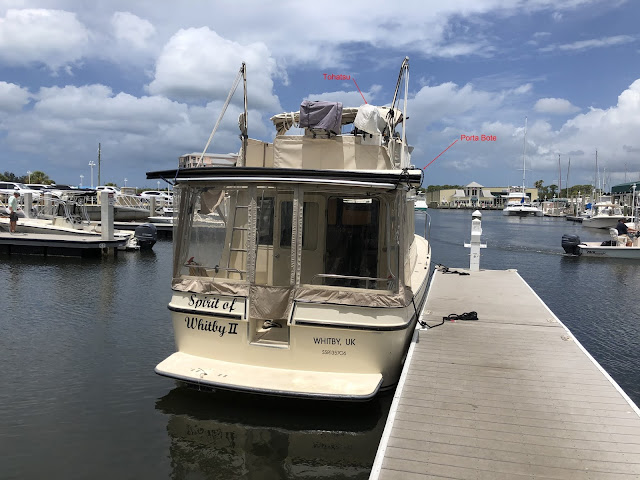Dinghy Time

When we purchased Pau Hana (formerly The Spirit of Whitby) it came with a 3.5 HP Tohatsu 4 stroke and a Porta Bote folding boat. 1st "Splash" Placida, FL I had no interest in the folding boat as it was a pain to set up, so we sold it and saved the money toward a RIB. The only issue with the Tohatsu was, the carburetor was off & in pieces and there were a few parts missing. With some research I learned that these motors are notorious for carburetor issues so no surprise that the previous owner had issues with it as well. In looking through the motor, I had a cracked fuel tank as well. I was able to locate a new carburetor kit as well as the tank and some new "ethanol" tolerant hoses. There is a carburetor kit that brings the HP of the Tohatsu up to 5 HP & it comes with an aluminum prop. I figured what the heck & ordered it. I saw some discussions on line that suggested upgrading to the higher HP shortens the life of the motor. I'm n



